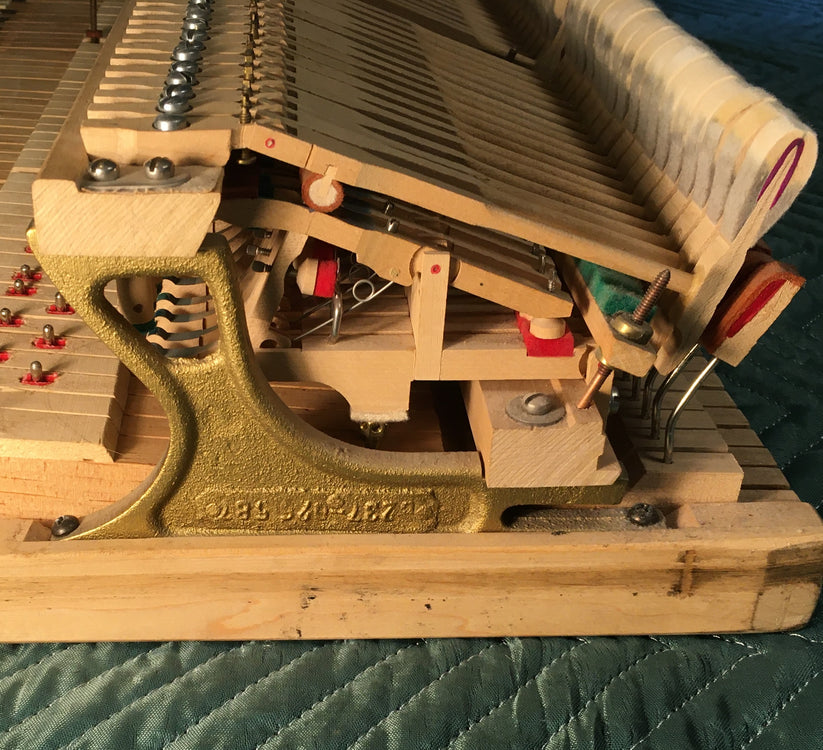Key dip, the Articulator, specifies a note’s depth of stroke and resulting hammer rise. Along with blow distance, letoff, and other geometry, it fine-tunes aftertouch, the follow-through needed for good and comfortable execution of each note. It also lifts the backcheck to its work and the damper to clear its strings.
Depth of stroke (dip) as a measurement relates to neighboring keys. But the depth of stroke needed to produce a specific hammer rise and aftertouch is a distance traveled, irrespective of neighbors. So, when we use a dip block or a WNG Dip Tool to set dip, our keys need to be level for our dip to be accurate.
